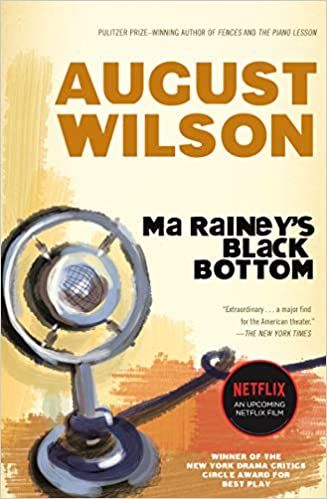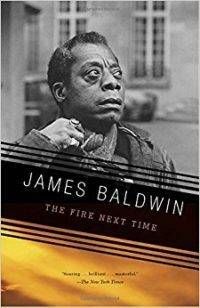
Reimagining Central Park’s Mall and Literary Walk
Every acre of New York’s Central Park was planned with precision. Though it contains many meandering walkways, there is but a single deliberate, straight walkway, or promenade: The Mall, also known as The Literary Walk. As well as a wide, straight path lined with benches and elm trees, The Mall contains statues of four literary greats (and also Christopher Columbus). Three of the four honored are British, and all are white men.
I propose replacing them with great American literary figures. My criteria are slim: must be American and must be no longer living. (This second criteria eliminated a lot of excellent candidates, alas!) Below I will list the existing Literary Walk figures and then discuss three suggestions for each replacement. I don’t have the power to change the statues in Central Park for real, but I see a very real need to pay tribute to more than just the old guard of literary white men.
In making this list, I was forced to skip over dozens of extremely eligible candidates. It turns out there are a tremendous number of incredible literary figures in American history. There are also some obvious omissions in a broader sense: namely, this list features no non-Black, non-Indigenous authors of color. I don’t doubt for a moment that part of the problem here is the way U.S. publishing has discriminated against Asian Americans and Latin Americans in particular, and people of color broadly, but I know writers of color have always been here; this is a gap in my knowledge. I will note that I had to pass over many eligible authors of color I would have included if I were allowing living authors.
William Shakespeare
I assume the Bard needs no introduction. Of course he is a great playwright, but there are many great American playwrights who could be represented here.

August Wilson
When I think of American playwrights, Wilson comes to mind immediately. The plays in his Pittsburgh Cycle (also known as the Century Cycle when performed in chronological order) are absolutely foundational to the American theatrical canon. You may wish to start with Ma Rainey’s Black Bottom, and then watch the adaptation starring Chadwick Boseman and Viola Davis.
Lorraine Hansberry
Or perhaps a New Yorker would be more appropriate. Although Hansberry’s best-known work, A Raisin in the Sun, is set in her home city of Chicago, she moved to New York at age 20 and the play’s title is from the poem “Harlem” by Langston Hughes. She also worked at the Black newspaper Freedom with W.E.B. Du Bois and Paul Robeson. Her work is still relevant and her legacy deserves to be honored. She died at age 34 of cancer; her archives are at the New York Public Library.

Jack Kirby
Okay, hear me out. Writing a comic book script is a lot like writing a play. You’re laying out the story and dialogue, and relying on other people — whether actors or artists — to bring it to life. Jack Kirby is the pen name for Jacob Kurtzberg, and he is best known as the co-creator of a little superhero you might have heard of named Captain America.
Robert Burns
The great Scottish poet probably also needs no introduction. He does, however, warrant replacing with an American.
Emily Dickinson
I can think of few greater American poets than Emily Dickinson, though of course there have been many. See her beautiful use of language in these collected quotes, and then read her Complete Poems. I also highly recommend the Apple TV+ series Dickinson, for a nuanced and humorous exploration of her life that uses a modern lens to show that she was not as dull and sheltered as history would have you believe.

Langston Hughes
Langston Hughes is the other poet who comes to mind immediately when I think of American poets. Here’s where to start with his poetry, including video of Cab Calloway playing along with a recitation of “The Weary Blues.” Among his many literary and cultural accomplishments, he founded Fire!!, the short-lived Harlem Renaissance magazine that has its spiritual successor in FIYAH.
Maya Angelou
Even people who don’t know anything about poetry know Maya Angelou. Her autobiography I Know Why The Caged Bird Sings (the first of seven volumes) is perhaps her best-known work, though she was primarily a poet. She was the second poet ever at a presidential inauguration, reciting “On the Pulse of Morning” at Bill Clinton’s 1993 inauguration (the first inaugural poet was Robert Frost, at Kennedy’s in 1961) and she directly inspired the 2021 inaugural poet, Amanda Gorman, whose poem “The Hill We Climb” included references to Angelou’s “Still I Rise.”
Sir Walter Scott
The novelist best known for Ivanhoe wrote great Scottish works of fiction. Let’s consider a novelist who wrote great American work.

Toni Morrison
Another literary figure who should need no introduction, Toni Morrison penned award-winning novels including The Bluest Eye, Sula, and Beloved, as well as being a professor at Howard University and an editor at Random House. Learn more about her, and then dive into her books. (I have not done an official count, but I believe we have more posts in the Book Riot archives about Toni Morrison than any other author.)
Zora Neale Hurston
The author of Their Eyes Were Watching God was also an anthropologist and folklorist, playwright, short story writer, co-founder of Fire!!, and biographer: Barracoon, about the last (known) living enslaved African brought to America in 1860, was written in 1931 and published posthumously in 2018.

Octavia E. Butler
Born in a still-segregated Pasadena, California, Butler asked for her first typewriter at age 10. Her work went on to win both the Hugo and the Nebula, and she was the first sci-fi/fantasy writer to be awarded a MacArthur Grant. She is perhaps best known for Kindred and the Earthseed (or Parable) series. Her archives are housed at the Huntington Library in Pasadena. The Mars rover Perseverance landing site is named for her.
Fitz-Green Halleck
Unlike the others, I suspect Halleck does require an introduction. The 19th century writer was known as a poet and essayist in both the romantic and satirical categories. His statue is notable for being the first in the park to portray an American.
Audre Lorde
Poet, essayist, and feminist Lorde is known for Sister Outsider and The Cancer Journals, among others. Born to Caribbean parents in Harlem during the Great Depression, Lorde, who was legally blind, took control of her life beginning with her childhood choice to change the spelling of her name (dropping the y from the end of Audrey); she fought for civil rights, opposed war, and was a feminist pioneer. For a taste of her writing, check out these Audre Lorde quotes.

James Baldwin
Baldwin’s essays are essential American reading. Start with The Fire Next Time. Or, for a more complete introduction to his work, check out our Reading Pathways. Born in the Harlem Renaissance, Baldwin was a gay Black man who wrote unflinchingly about America as it really was.
Will Rogers
Although he is best known as a cowboy, Will Rogers was also a Cherokee citizen born on land that is now Oklahoma. Besides being an actor he was a humorist, newspaper columnist, and social commentator. His writing is collected in Will Rogers’ World.
Now…who do we replace that monster Christopher Columbus with?














